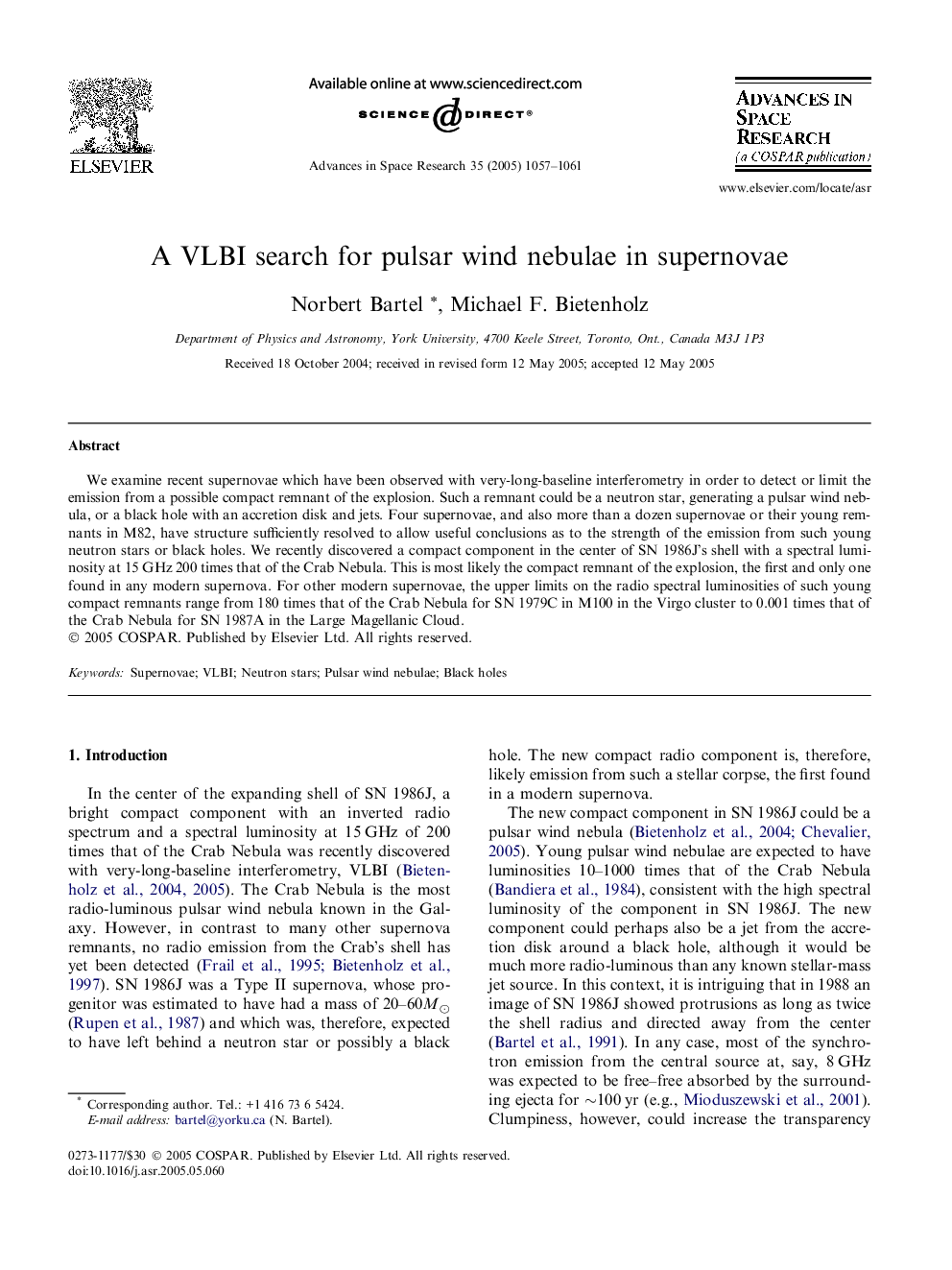| Article ID | Journal | Published Year | Pages | File Type |
|---|---|---|---|---|
| 10695943 | Advances in Space Research | 2005 | 5 Pages |
Abstract
We examine recent supernovae which have been observed with very-long-baseline interferometry in order to detect or limit the emission from a possible compact remnant of the explosion. Such a remnant could be a neutron star, generating a pulsar wind nebula, or a black hole with an accretion disk and jets. Four supernovae, and also more than a dozen supernovae or their young remnants in M82, have structure sufficiently resolved to allow useful conclusions as to the strength of the emission from such young neutron stars or black holes. We recently discovered a compact component in the center of SN 1986J's shell with a spectral luminosity at 15Â GHz 200 times that of the Crab Nebula. This is most likely the compact remnant of the explosion, the first and only one found in any modern supernova. For other modern supernovae, the upper limits on the radio spectral luminosities of such young compact remnants range from 180 times that of the Crab Nebula for SN 1979C in M100 in the Virgo cluster to 0.001 times that of the Crab Nebula for SN 1987A in the Large Magellanic Cloud.
Related Topics
Physical Sciences and Engineering
Earth and Planetary Sciences
Space and Planetary Science
Authors
Norbert Bartel, Michael F. Bietenholz,
